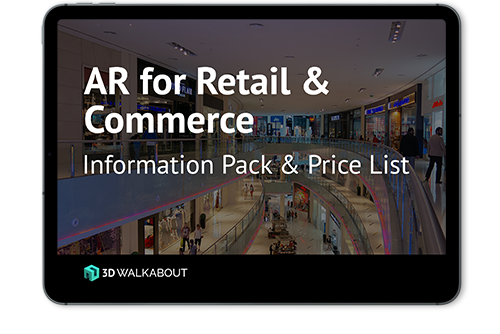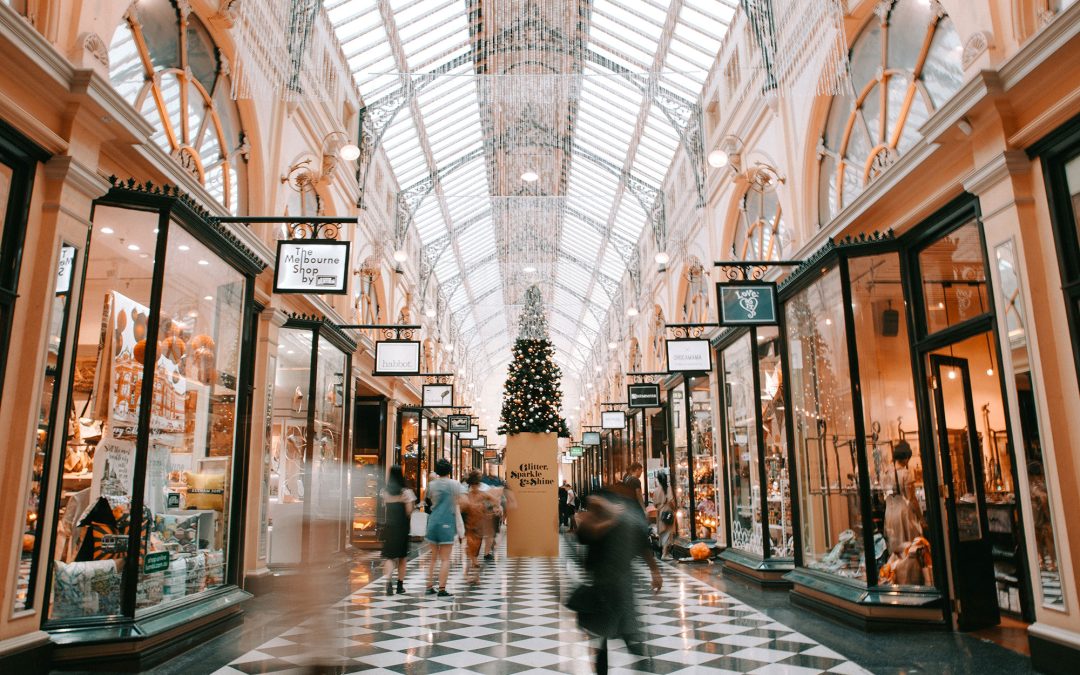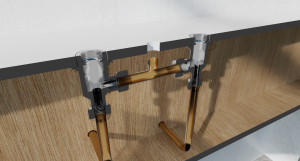AR for Retail & Commerce
3D Walkabout is an Australian based AR studio that designs AR apps for the Retail & Commerce industry to improve their retail & commerce training and service.

Augmented Reality (AR) for Retail & Commerce Industry
Augmented reality (AR) offers innovative possibilities for the retail sector, changing the way customers interact with products. Smart mirrors equipped with AR technology allow shoppers to virtually try on different clothes, eliminating the need for physical changing rooms and enhancing the overall shopping experience. Similarly, AR can be used to virtually try on accessories like watches and glasses, enabling customers to see how they look before making a purchase. AR can provide virtual beauty simulations, allowing customers to experiment with various beauty treatments and hairstyles to find their perfect look. In shopping malls, AR can assist with way-finding, helping customers navigate through complex layouts and locate specific stores or products with ease. Additionally, AR can be utilised for package and label activations, enhancing product information and engaging customers through interactive and immersive experiences. By leveraging augmented reality, the retail industry can create personalized and engaging shopping experiences, boosting customer satisfaction and driving sales.
What are the benefits of AR Retail & Commerce for your business?
Offers more interactive marketing for retailers
Can make branding more memorable
Encourages customers to try out products
Creates more of an experience for the potential clients
Can be used to improve self-service within stores.
Can be used as a tool for promotion within other AR games etc.
Increases conversion rates and sales for online retailers
Reduces the number of products being returned
Attracts a new client base
Promotes sales of niche, expensive items by letting customers explore
How is AR currently being used by retail & commerce industry?
Augmented reality is something that is already changing the retail industry on the high street, as well as the way that shopping works online. At a store, AR can be used to improve self-service for customers. For example, when you scan products, AR can show you more information about their ingredients and other features. This gives customers more understanding and power over what they are buying.
When it comes to online retail, AR is being used to project products into the user’s room in a way that allows them to see what it would be like in their home without buying it. At a mall, AR is also an eye-catching and interactive way that stores can make displays and customer experience more engaging.
When it comes to metaverse shopping, there is a whole other level of extended reality sales. There is more than one metaverse mall where users can browse, buy and sell in the same way that they would in the real world. However, this gives individuals access to people from all over the world, making sales much easier with a direct connection to a huge number and range of potential customers.

Brainstorm your ideas on 1300 00 3392
If you’d like to receive our full ‘AR for Retail & Commerce Information Pack & Price List’ please add your details below.
The industries we work in
AR Retail & Commerce Case Studies
No Results Found
The page you requested could not be found. Try refining your search, or use the navigation above to locate the post.
AR Retail & Commerce Articles
AR Retail & Commerce Videos
Frequently Asked Questions
Why brands should use augmented reality?
Brands should use augmented reality since it can hugely boost their customer engagement and retention. Those using AR are seeing increased custom and can also benefit from lower return rates. AR can also be used by brands to improve self-service as well as broaden marketing strategies.
How does augmented reality benefit retailers?
Augmented reality allows brands to create a unique and therefore memorable experience for clients which will keep them coming back. It can also improve on self-service elements of the shopping experience which means customers have a more enjoyable, smoother experience of your store and your brand.
What is augmented retail strategy?
Augmented retail strategy is the use of AR elements to improve aspects of the sales process for customers. It includes branding and marketing, creating an experience for customers which promotes the product or service and encourages them to purchase it through the aid of augmented reality.
What is AR and VR in retail?
Augmented reality is a way of overlaying digital elements onto real life, such as displaying a product’s information on a hologram screen or projecting an item onto an image of your real home. VR, or virtual reality, has been used by some companies to create entire virtual stores which customers can explore from their own homes.


































